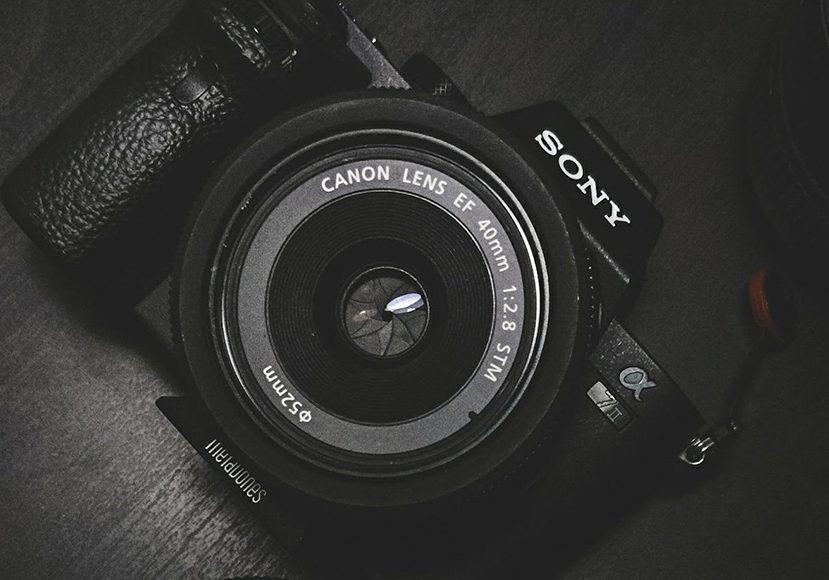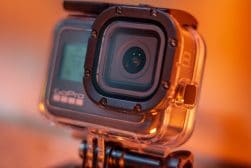
7 Interesting Sony Statistics (Fact Checked for 2024)
Discover all the most up-to-date facts, figures and statistics about Sony. The perfect resource for journalists, updated for 2024.
Learn | Statistics & Facts | By Jeff Collier | Last Updated: February 6, 2024
This article is an updated list of 7 interesting Sony statistics and facts for 2024.
Sony is a Japanese multinational corporation that dominates various industries like gaming, music, appliances, and imaging products.
Among Sony Alpha’s most notable camera product lines are the Sony A-series mirrorless, the Sony ZV vlogging, and the Sony RX compact cameras.
Find out more in our up-to-date roundup of Sony stats.
You might also be interested in our other statistical articles on Fujifilm, DJI, Nikon and Panasonic.
- Sony has been in the market for 77 years
- The very first Sony product was a rice cooker, and it flopped!
- Sony has five business sections, 108,900 employees, and $89.9 billion in revenue
- Sony has a total of 95,533 patents! 78% of them are active
- Imaging & Sensing Solutions makes up 11% of Sony’s revenue
- Sony has a 22.1% market share of digital cameras
- Sony plans an upcoming increase of 200% in mobile camera sensor size
General Sony Statistics
In its early beginnings, the company was incorporated under Tsushin Kogyo, or, Tokyo Telecommunications Engineering Corporation. This lasted till 1958 when the company changed its name to Sony. It came from the Greek word “sonus”, which means sound.
Sony was easier on the ear, especially in international markets. And it’s been a household name for the last 65 years.
1. Sony Has Been in the Market for 77 Years
(Britannica)
In 1946, Two engineers decided to work together on making consumer goods and appliances.
Ibuka Masaru and Morita Akio had met before during WWII. They both worked on the complicated design of heat-seeking missiles.
It seems that the mission and sensitivity of their work made them lifelong partners. Masaru was more into the technical side of the operations, while Akio was a business genius.
One created innovative products, while the other unlocked the secrets of branding and world trade.
2. The Very First Sony Product Was a Rice Cooker, and It Flopped!
Rice is a staple ingredient in Japanese cuisine, so developing an electric rice cooker was a logical first choice for these up-and-coming entrepreneurs.
Ibuka Masaru and Morita Akio marketed the cooker under the brand name Totsuko, which was the short form of the longer Tsushin Kogyo.
The product was good, but the post-war consumers weren’t interested. The sales were pretty dismal, and that could have easily destroyed the company. However, a stroke of luck and genius saved the brand.
Maintenance deals, diversification, and producing a variety of innovative appliances soon elevated Sony’s ranks in the business world, and in less than two decades, it became a global giant.
3. Five Business Sections, 108,900 Employees, and $89.9 Billion in Revenue
Currently, Sony employs 108,900 highly skilled people. Around 55,100 of them are Japan-based, and the rest work in various plants all over the world.
Sony has five main business divisions, which are:
- Game & Network Services
- Music
- Pictures
- Electronics Products & Solutions
- Imaging and sensing solutions
According to Forbes magazine, the collected revenue from all of these divisions amounted to $89.9 Billion in the fiscal year 2022. Sony has assets valued at $261.5 Billion and generates annual profits of around $8 Billion.
4. Sony Has a Total of 95,533 Patents!
A company that sells mainly innovative products has to constantly come up with new tech. And that’s exactly what Sony did from the get-go.
How Much Do You REALLY Know About Photography?! 🤔
Test your photography knowledge with this quick quiz!
See how much you really know about photography...

The company has a huge R&D department that divides its efforts over all of the five business groups of Sony.
Sony filed most of its patents in the USA, with Japan coming in a close second. China and Europe follow behind with a clear lag. 78% of these patents are active, and the rest were abandoned applications.
Sony Imaging Statistics
Sony launched their first digital camera, the Mavica, in 1988. It didn’t do too well, which placed the lid on that line for eight whole years. In 1996, Sony went back to the drawing board and created the Cybershot.
That was the first of many iconic digital cameras.
5. Imaging & Sensing Solutions Makes Up 11% of Sony’s Revenue
The digital photography market has witnessed major changes from the 1990s to the 2000s when the camera and lens tech reached stellar levels.
The following decades didn’t perform as well though, and photography gear sales fell sharply, despite the introduction of better equipment.
In 2022, Sony’s revenues came primarily from the gaming and electronics divisions.
- Game & Network Services: 27%
- Music: 11%
- Pictures: 13%
- Electronics Products & Solutions: 23%
- Imaging and sensing solutions: 11%
- Other financial services: 15%
6. Sony Has a 22.1% Market Share of Digital Cameras
In 2021, Sony had a sizable market share of 22.1%, which puts it in second place right after Canon, with its prime cut of 47.9%.
The third place has a previous big player, which is Nikon, and that one has a modest market segment of 13.7%.
Sony did much better in the mirrorless cameras segment though, and despite the new Canon releases, Sony was the market leader.
It’s worth noting here that camera sales went down from 120 million units in 2010 to 8.85 million units in 2020. This pushed Sony, and many other camera manufacturers to focus on other business sectors.
7. An Upcoming Increase of 200% in Mobile Camera Sensor Size
According to Terushi Shimizu, the CEO of Sony’s Semiconductor division, the quality of smartphone cameras will be better than single-lens reflex cameras in 2024.
This forecast is rather solid, thanks to a substantial increase of 200% in the mobile camera sensor size.
Also, the cameras would have larger apertures and a sensational upgrade in computational photography technology.
Additional capabilities of the mobile phone cameras include AI enhancement, Super HDR imaging using multi-frame captures, and expanded zoom.
High-end smartphones equipped with this technology would easily replace interchangeable lens cameras (ILCs).
Sources
1. https://www.globaldata.com/data-insights/technology-media-and-telecom/sony-groups-employee-headcount/
2. https://www.forbes.com/companies/sony/?sh=5ea237b26f42
3. https://www.britannica.com/topic/Sony
4. https://insights.greyb.com/sony-patents/
5. https://cameraprism.com/camera-brands-market-share/
6. https://blog.gitnux.com/digital-camera-sales-statistics/
7. https://www.lifewire.com/what-are-sony-cameras 493492#:~:text=The%20first%20digital%20camera%20from,Memory%20Stick%20external%20memory%20card.
8. https://www.adorama.com/alc/best-sony-camera/
9. https://petapixel.com/2022/05/31/smartphone-cameras-will-be-superior-to-slrs-by-2024-says-sony-ceo/
11. Best Sony lenses

Check out these 8 essential tools to help you succeed as a professional photographer.
Includes limited-time discounts.













